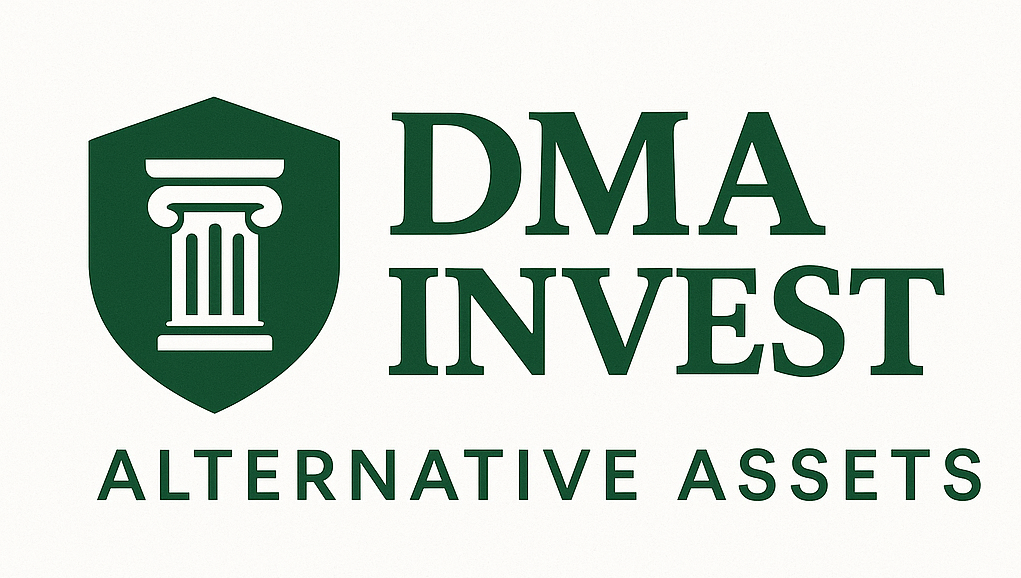Distressed Debt: Loans to struggling companies in exchange of equity
Globally, distressed debt, particularly debt-for-equity swaps in private companies, remains a vital and active strategy fueled by economic volatility and the growth of private credit

Global Market Trends (2019-2024):
Distressed debt investing has evolved from a niche strategy to a mainstream alternative asset class, particularly in private markets. Key global trends include
Market Expansion & Volatility Drivers: Post-COVID supply chain shocks, rapid interest rate hikes (2022-2023), and geopolitical tensions have significantly increased corporate stress globally. This expanded the pool of potential distressed assets. Global distressed debt AUM grew from ~$95bn (2019) to an estimated $140bn+ (2023) (Preqin/S&P Global), representing roughly ~47% cumulative growth (5yr CAGR ~8%).
Private Credit's Ascendancy: The massive growth of private credit (~$1.7tn AUM globally) created a vast, often less liquid, market for corporate debt outside traditional banks. This is now a primary hunting ground for distressed investors, especially for smaller/mid-market private companies. Year-over-year deal volume in distressed private credit often fluctuates 15-30% based on market shocks.
Debt-for-Equity Swaps as a Dominant Tool: For viable but over-leveraged private companies, debt-for-equity swaps have become the preferred restructuring outcome. Creditors (often specialized distressed funds or opportunistic private credit players) exchange debt claims for controlling or significant equity stakes, aiming to restructure, improve operations, and eventually exit. This avoids costly, reputation-damaging bankruptcies where possible. Activity spiked notably in 2020 (COVID) and again in 2023 (funding squeeze).
Sector Focus: Stress has been concentrated in cyclical sectors (Real Estate, Retail, Industrials) and capital-intensive tech. Recent pressure points include commercial real estate refinancing and late-stage VC-backed companies struggling with down rounds.
Investor Sophistication: Increased competition has driven specialization. Funds now deploy dedicated restructuring teams, operational partners, and sector-specific expertise to maximize recovery through active ownership post-swap.
The Russian Distressed Debt Market (Post-2022):
The Russian distressed debt landscape has been fundamentally and irrevocably altered by the events of February 2022 and subsequent sanctions:
Sanctions Overhang: This is the defining factor. Comprehensive Western sanctions (capital controls, asset freezes, SWIFT restrictions, trading bans) have:
Conclusion:
Globally, distressed debt, particularly debt-for-equity swaps in private companies, remains a vital and active strategy fueled by economic volatility and the growth of private credit. Sophisticated investors are deploying capital to restructure viable businesses. In stark contrast, the Russian market, including Saint Petersburg, is effectively isolated and distorted by sanctions. While underlying corporate distress is widespread, the traditional distressed debt investment market is paralyzed. Activity is dominated by state actors and capital from non-sanctioning jurisdictions, driven more by political and strategic imperatives than conventional distressed investing principles. Opportunities in SPb exist only for highly specialized, politically acceptable investors with extremely high-risk tolerance and very long time horizons, facing profound challenges in valuation, restructuring execution, and ultimate exit. For the foreseeable future, the Russian distressed market remains a high-risk, low-transparency environment largely off-limits to global capital.
Distressed debt investing has evolved from a niche strategy to a mainstream alternative asset class, particularly in private markets. Key global trends include
Market Expansion & Volatility Drivers: Post-COVID supply chain shocks, rapid interest rate hikes (2022-2023), and geopolitical tensions have significantly increased corporate stress globally. This expanded the pool of potential distressed assets. Global distressed debt AUM grew from ~$95bn (2019) to an estimated $140bn+ (2023) (Preqin/S&P Global), representing roughly ~47% cumulative growth (5yr CAGR ~8%).
Private Credit's Ascendancy: The massive growth of private credit (~$1.7tn AUM globally) created a vast, often less liquid, market for corporate debt outside traditional banks. This is now a primary hunting ground for distressed investors, especially for smaller/mid-market private companies. Year-over-year deal volume in distressed private credit often fluctuates 15-30% based on market shocks.
Debt-for-Equity Swaps as a Dominant Tool: For viable but over-leveraged private companies, debt-for-equity swaps have become the preferred restructuring outcome. Creditors (often specialized distressed funds or opportunistic private credit players) exchange debt claims for controlling or significant equity stakes, aiming to restructure, improve operations, and eventually exit. This avoids costly, reputation-damaging bankruptcies where possible. Activity spiked notably in 2020 (COVID) and again in 2023 (funding squeeze).
Sector Focus: Stress has been concentrated in cyclical sectors (Real Estate, Retail, Industrials) and capital-intensive tech. Recent pressure points include commercial real estate refinancing and late-stage VC-backed companies struggling with down rounds.
Investor Sophistication: Increased competition has driven specialization. Funds now deploy dedicated restructuring teams, operational partners, and sector-specific expertise to maximize recovery through active ownership post-swap.
The Russian Distressed Debt Market (Post-2022):
The Russian distressed debt landscape has been fundamentally and irrevocably altered by the events of February 2022 and subsequent sanctions:
Sanctions Overhang: This is the defining factor. Comprehensive Western sanctions (capital controls, asset freezes, SWIFT restrictions, trading bans) have:
- Frozen International Capital: Access to Western distressed funds and restructuring expertise is virtually non-existent. Primary sources of fresh capital are severely restricted.
- Complicated Existing Debt: Servicing and restructuring USD/EUR-denominated debt is immensely complex or impossible for many companies. Legal ownership of restructured equity by foreign investors is fraught with risk (sanctions, potential future asset seizures).
- Created a Domestic Bubble: Distress is widespread, but the market to resolve it is severely constrained. Many technically distressed situations are in stasis.
- State & "Friendly" Capital Dominance: Resolution is increasingly driven by state-owned banks (Sberbank, VTB), state support mechanisms, or capital from "friendly" jurisdictions (primarily CIS, Middle East, Asia), often with significant political/strategic considerations overriding pure financial logic.
- Legal & Operational Uncertainty: Rapidly changing laws, unclear property rights in restructured entities, and operational challenges (logistics, supply chains) make traditional distressed investing and value creation post-swap extremely difficult.
- Valuation Black Hole: The lack of international benchmarks, sanctions impact, and restricted exit options make accurate valuation of distressed debt and restructured equity nearly impossible. Discounts are deep but risks are profound.
- Pre-2022 Data Irrelevance: Pre-war growth figures (~10-15% YoY pre-2020, volatile during COVID) are obsolete. The current "market" is a fraction of its former size and operates under entirely different rules. Reliable post-2022 % growth data is unavailable and largely meaningless given the distortions.
Conclusion:
Globally, distressed debt, particularly debt-for-equity swaps in private companies, remains a vital and active strategy fueled by economic volatility and the growth of private credit. Sophisticated investors are deploying capital to restructure viable businesses. In stark contrast, the Russian market, including Saint Petersburg, is effectively isolated and distorted by sanctions. While underlying corporate distress is widespread, the traditional distressed debt investment market is paralyzed. Activity is dominated by state actors and capital from non-sanctioning jurisdictions, driven more by political and strategic imperatives than conventional distressed investing principles. Opportunities in SPb exist only for highly specialized, politically acceptable investors with extremely high-risk tolerance and very long time horizons, facing profound challenges in valuation, restructuring execution, and ultimate exit. For the foreseeable future, the Russian distressed market remains a high-risk, low-transparency environment largely off-limits to global capital.
Ready to transform illiquid assets into strategic victories? DMA INVEST turns complexity into clarity—because alternative investing shouldn’t be a gamble.
Contact us today to unlock the full potential of your portfolio
Contact us today to unlock the full potential of your portfolio
Contacts
Tel: +79052255567
email: info@dma-invest.com
Address: St. Petersburg, 191123, Zakharyevskaya st., 25 letter A, premises. 21-n, office 508
email: info@dma-invest.com
Address: St. Petersburg, 191123, Zakharyevskaya st., 25 letter A, premises. 21-n, office 508
About the company
Services
Contacts
OOO "DMA INVEST"
St. Petersburg, 191123, Zakharyevskaya st., 25 letter A, premises. 21-n, office 508
Russian Federation
Tel: +79052255567
email: info@dma-invest.com
St. Petersburg, 191123, Zakharyevskaya st., 25 letter A, premises. 21-n, office 508
Russian Federation
Tel: +79052255567
email: info@dma-invest.com

